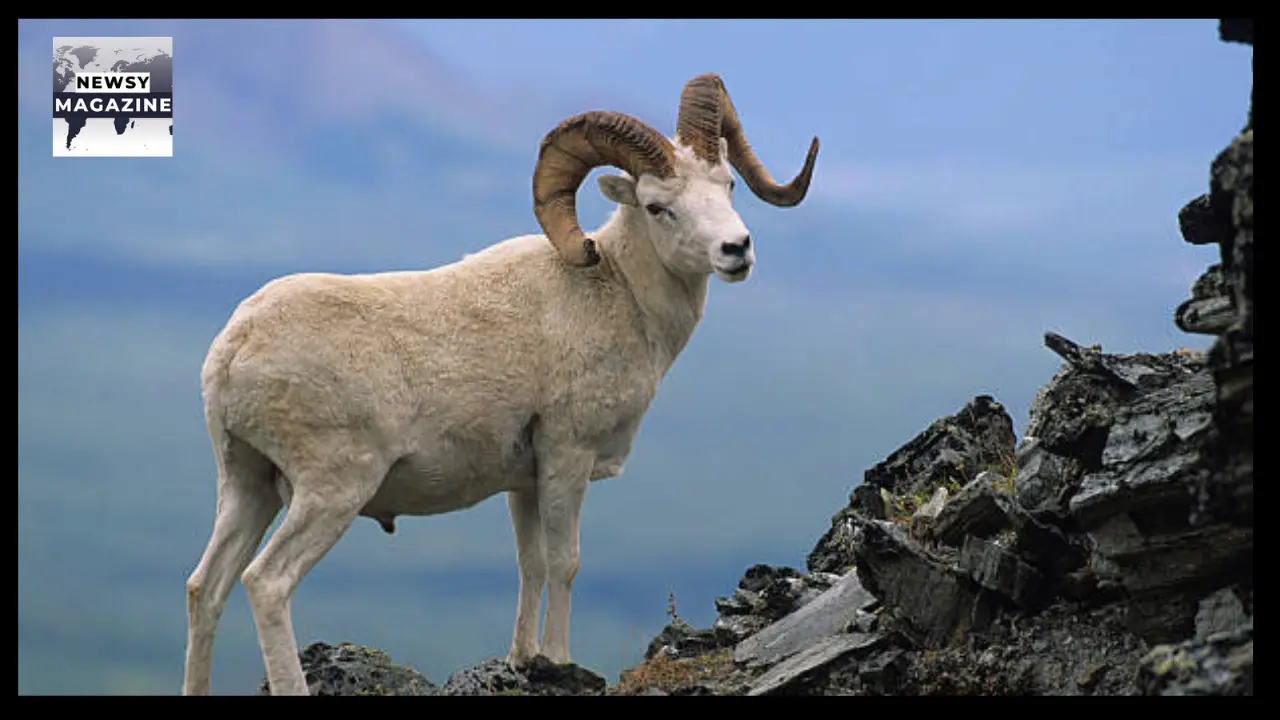
Rams are captivating creatures that have intrigued humans for centuries with their powerful presence and impressive horns. These animals, often seen scaling rocky cliffs with ease, embody strength and agility. Their iconic horns, which can curl into magnificent spirals, are not only a symbol of their resilience but also play a crucial role in their social structure and survival. In this article, we delve into the world of rams, focusing on their biology, behavior, and the unique traits that set them apart from other animals, specifically looking at the “animal:dlwjz04xrs0= ram”
One of the most fascinating aspects of rams is their adaptation to various environments, from the rugged mountains of North America to the expansive plains of Central Asia. Their ability to thrive in diverse habitats is a testament to their evolutionary success. Understanding the life of a ram, known scientifically in some contexts as “animal:dlwjz04xrs0= ram” provides insight into their survival strategies and their role in maintaining ecological balance. This deep dive will uncover the many layers of their existence, from their reproductive habits to their social dynamics.
The significance of rams extends beyond their physical attributes and natural habitats. They hold a prominent place in human culture and mythology, symbolizing power, leadership, and determination. Whether depicted in ancient legends or represented in zodiac signs, rams continue to inspire and fascinate. This comprehensive guide aims to provide a thorough and engaging exploration of rams, ensuring readers walk away with a newfound appreciation for these remarkable animals.
The Biology of Rams
Physical Characteristics
Rams are known for their muscular bodies and distinctive horns, which can grow up to 40 inches in length. These horns are not just for show; they play a crucial role in dominance battles and protection against predators. The horns are made of keratin, the same material as human nails, and continue to grow throughout the ram’s life.
Adaptations
Rams have evolved to thrive in various environments, from mountainous terrains to grassy plains. Their hooves are specially adapted to provide traction on rocky surfaces, enabling them to navigate steep and uneven landscapes. Additionally, their thick wool coat provides insulation against harsh weather conditions, keeping them warm in cold climates and cool in hot ones.
Reproductive Biology
Rams reach sexual maturity at around two years of age. The mating season, known as the rut, sees males competing fiercely for the attention of ewes. Dominant rams often engage in head-butting contests to establish mating rights. These contests are intense but rarely result in serious injury due to the shock-absorbing structure of their skulls.
Habitat and Distribution
Native Habitats
Rams are native to a variety of habitats, including mountainous regions, deserts, and grasslands. They are particularly abundant in the Rocky Mountains, where they graze on a wide range of vegetation, from grasses to shrubs. Their ability to adapt to different environments has played a key role in their widespread distribution.
Global Distribution
Rams are found in many parts of the world, including North America, Europe, and Asia. Each region hosts different species adapted to its specific environment. For example, the bighorn sheep is common in North America, while the mouflon is found in the mountains of Europe and Asia.
Environmental Impact
Rams play a significant role in their ecosystems. As grazers, they help maintain vegetation balance, preventing overgrowth and promoting biodiversity. Their grazing habits can influence plant community structures, supporting a variety of other wildlife species.
Behavior and Social Structure

Herd Dynamics
Rams are social animals that typically live in herds led by a dominant male. These herds protect predators and facilitate social interactions. The structure of the herd is hierarchical, with clear social rankings established through physical contests and displays of strength.
Dominance Battles
Dominance battles among rams are a common sight, especially during the mating season. These battles involve intense head-butting contests, where rams clash their horns to assert dominance. Despite their ferocity, these battles rarely cause serious harm due to the ram’s strong skull and shock-absorbing horns.
Communication
Rams communicate with each other through a variety of vocalizations, body language, and scent marking. Vocalizations range from bleats and grunts to more complex calls used during mating season. Body language, such as posturing and horn displays, plays a crucial role in establishing dominance and deterring rivals.
Reproduction and Lifespan
Mating Season
The mating season for rams, known as the rut, occurs in the fall. During this time, males compete for the attention of females through displays of strength and dominance. Successful males earn the right to mate with multiple females, ensuring the continuation of their genetic line.
Gestation and Birth
After mating, ewes have a gestation period of about five months, typically giving birth to one or two lambs in the spring. The timing of birth ensures that the lambs are born during a period of abundant food supply, increasing their chances of survival.
Lifespan
Rams can live up to 15 years in the wild, although their lifespan can be influenced by factors such as predation, disease, and environmental conditions. In captivity, with proper care and protection from predators, rams can live even longer.
Rams in Culture and Symbolism
Mythological Significance
Rams hold a prominent place in various mythologies. In Greek mythology, the Golden Fleece was a symbol of authority and kingship, and Jason’s quest to retrieve it is a tale of heroism and adventure. Rams also appear in other mythological contexts, often representing strength and determination.
Astrological Symbolism
In astrology, the ram represents the zodiac sign, Aries. Aries is associated with traits such as courage, leadership, and a pioneering spirit. People born under this sign are often described as dynamic and ambitious, qualities symbolized by the ram.
Religious Contexts
Rams are also significant in various religious traditions. In Christianity, the ram is a symbol of Christ’s sacrifice, while in ancient Egyptian culture, the ram was associated with the god Amun, representing fertility and creation. These religious associations highlight the ram’s enduring symbolic power.
The Economic Importance of Rams
Wool Production
Rams and sheep are vital to the wool industry. Their fleece is sheared annually and processed into wool, which is used to make clothing, blankets, and other textiles. Wool is prized for its warmth, durability, and versatility, making it a valuable commodity in many regions.
Meat Production
Ram meat, known as mutton, is a staple in many cuisines worldwide. Mutton is rich in protein and essential nutrients, making it a popular choice for various dishes. The meat industry relies on rams and sheep for a steady supply of high-quality meat products.
Dairy Products
Sheep milk is used to produce a range of dairy products, including cheese, yogurt, and butter. These products are especially popular in Mediterranean and Middle Eastern cuisines. Sheep milk is rich in nutrients and often considered superior in flavor to cow’s milk.
Conservation and Challenges
Habitat Loss
One of the biggest threats to ram populations is habitat loss due to human activities such as agriculture, urbanization, and mining. Preserving natural habitats is crucial for the survival of these animals. Conservation efforts focus on protecting and restoring these habitats to ensure sustainable populations.
Climate Change
Climate change poses significant challenges for rams, affecting their food sources and habitat conditions. Changes in temperature and precipitation patterns can impact vegetation growth, reducing available grazing areas. Conservation strategies must address climate resilience to help rams adapt to changing conditions.
Predation and Disease
Predation by large carnivores and diseases are other major threats to rams. Efforts to manage predator populations and monitor disease outbreaks are essential to protect these animals. Vaccination programs and habitat management can help mitigate these risks.
Read Also: Discover Pikachu:dzzq_bs41jc= Pokemon: Unlock the Secret!
Rams in Modern Research
Evolutionary Studies
Rams are valuable subjects for evolutionary biology research. Studies on their horn development, mating behaviors, and social structures provide insights into natural selection and adaptation. Understanding these evolutionary processes can inform conservation strategies and enhance our knowledge of animal behavior.
Behavioral Research
Behavioral research on rams explores their social interactions, communication methods, and dominance hierarchies. This research can improve livestock management practices and inform breeding programs. It also contributes to our understanding of animal cognition and social dynamics.
Agricultural Innovations
Research on rams also supports agricultural innovations. Advances in wool production, disease prevention, and sustainable grazing practices benefit from studies on ram biology and behavior. These innovations contribute to the efficiency and sustainability of the livestock industry.
Read Also: Unveiling the Creative Universe Of Clipart:t4h-x66pih4= Turkey
Conclusion
Animal:dlwjz04xrs0= Ram are extraordinary animals with a rich history and significant roles in ecosystems and human economies. Their strength, adaptability, and resilience make them fascinating subjects of study and admiration. By understanding and appreciating these magnificent creatures, we can ensure their continued presence in our world.
This comprehensive guide provides a detailed look into the biology, behavior, habitat, and cultural significance of rams, offering valuable insights and intriguing facts about these remarkable animals.
FAQs
Q1: What is the primary diet of rams?
A: Rams primarily graze on grasses, shrubs, and herbs, which provide the necessary nutrients for their survival.
Q2: How do rams establish dominance within a herd?
A: Rams establish dominance through head-butting contests, which determine social ranking and mating rights within the herd.
Q3: What is the significance of rams in Greek mythology?
A: In Greek mythology, the ram with the Golden Fleece is central to the story of Jason and the Argonauts, symbolizing adventure and heroism.
Q4: How long do rams typically live in the wild?
A: Rams can live up to 15 years in the wild, although life expectancy varies based on environmental conditions and predation risks.
Q5: What are some of the challenges faced by rams in the wild?
A: Rams face challenges such as habitat loss, climate change, and predation, which threaten their populations.





